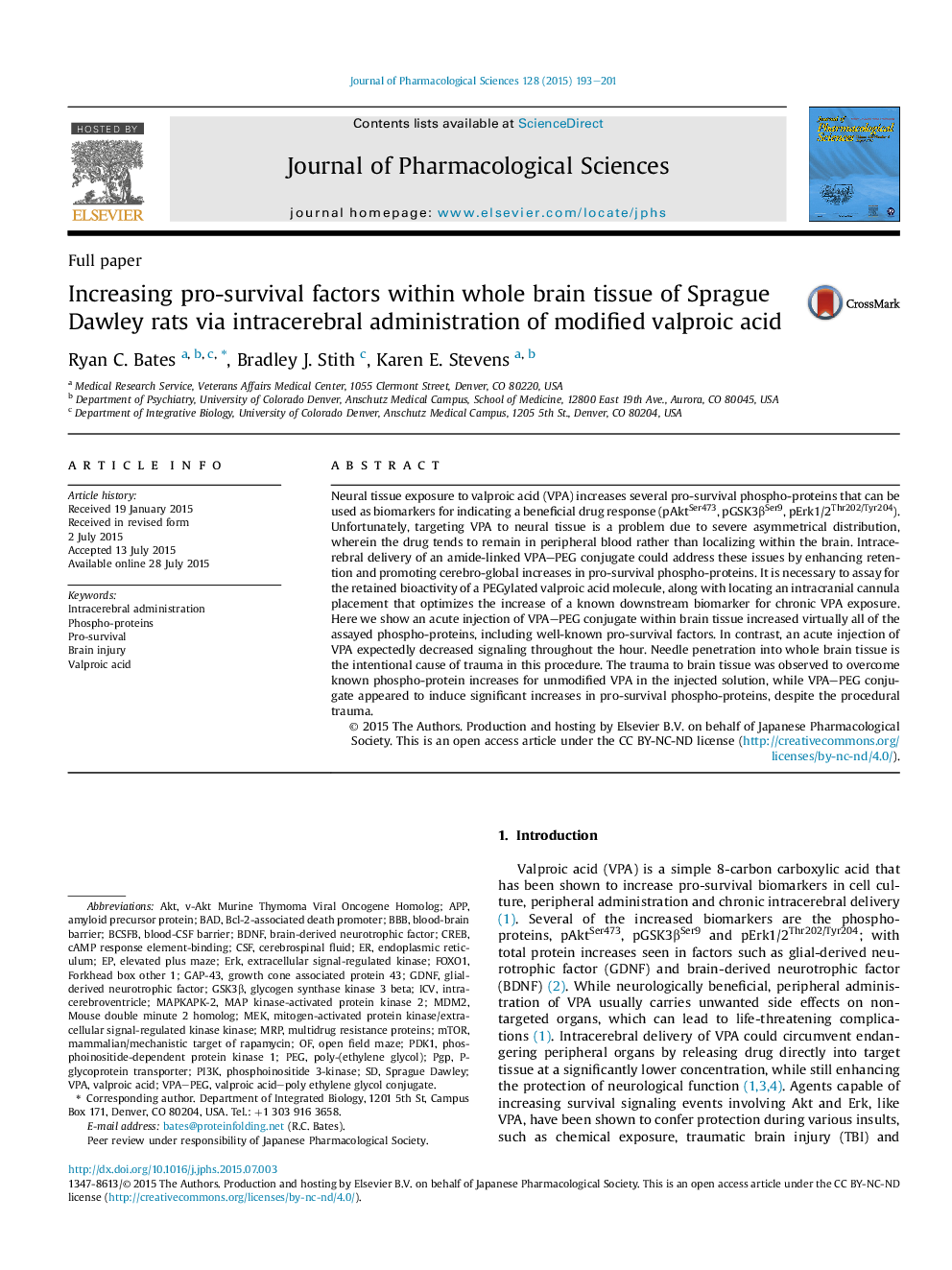| Article ID | Journal | Published Year | Pages | File Type |
|---|---|---|---|---|
| 2548923 | Journal of Pharmacological Sciences | 2015 | 9 Pages |
Neural tissue exposure to valproic acid (VPA) increases several pro-survival phospho-proteins that can be used as biomarkers for indicating a beneficial drug response (pAktSer473, pGSK3βSer9, pErk1/2Thr202/Tyr204). Unfortunately, targeting VPA to neural tissue is a problem due to severe asymmetrical distribution, wherein the drug tends to remain in peripheral blood rather than localizing within the brain. Intracerebral delivery of an amide-linked VPA–PEG conjugate could address these issues by enhancing retention and promoting cerebro-global increases in pro-survival phospho-proteins. It is necessary to assay for the retained bioactivity of a PEGylated valproic acid molecule, along with locating an intracranial cannula placement that optimizes the increase of a known downstream biomarker for chronic VPA exposure. Here we show an acute injection of VPA–PEG conjugate within brain tissue increased virtually all of the assayed phospho-proteins, including well-known pro-survival factors. In contrast, an acute injection of VPA expectedly decreased signaling throughout the hour. Needle penetration into whole brain tissue is the intentional cause of trauma in this procedure. The trauma to brain tissue was observed to overcome known phospho-protein increases for unmodified VPA in the injected solution, while VPA–PEG conjugate appeared to induce significant increases in pro-survival phospho-proteins, despite the procedural trauma.
